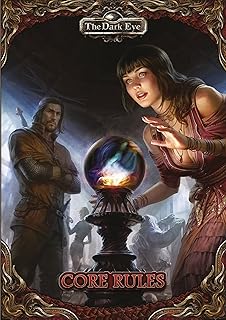During Summer Game Fest, I had the opportunity to delve into the medieval fantasy world of Crimson Desert, an action RPG by Pearl Abyss. As a seasoned gaming journalist, I understand the importance of providing honest critiques, even if it means labeling a game as “bad” without sugar-coating it as simply not my cup of tea. However, in today’s climate of hypersensitivity, expressing such definitive opinions can stir a whirlwind of backlash and scrutiny.
Carolyn Petit’s absence during my Crimson Desert playthrough left me shouldering the responsibility of candidly assessing the game. Admittedly, the demo session left me exasperated, with frustrations bubbling to the surface, challenging my patience like never before in my decade-long career. The task of condensing a game’s essence into a brief preview slice for critics and content creators is no easy feat, and Crimson Desert’s demo failed to showcase its potential adequately.
Despite my reservations about passing judgment on a game based on a mere 30-minute gameplay session, the nature of previews demands timely assessments. If my initial encounter with Crimson Desert had been outside a preview setting, I would have swiftly abandoned it due to the myriad issues plaguing the experience. Yet, as a seasoned reviewer, I recognize the weight of my words and the potential impact they may have on a game’s reputation before its official release.
The preview session with Crimson Desert unearthed a plethora of gameplay frustrations that tested my resolve. Maneuvering through the game’s clunky controls amidst relentless enemy hordes felt like a herculean task. The combat mechanics, particularly the convoluted object interaction system, added layers of complexity that hindered immersion and enjoyment.
One of the most exasperating aspects was the cumbersome process of lifting and manipulating objects, requiring a series of intricate button inputs that felt out of place in a typical action RPG. As I navigated the battlefield, the relentless pursuit of enemies, coupled with the protagonist’s sluggish movements, further compounded my gameplay woes.
Engaging in combat encounters, especially against multiple foes, proved to be a challenge due to the game’s unintuitive combat mechanics. The need for precision and finesse in executing attacks felt at odds with the game’s clunky controls, leading to a sense of frustration and disconnect from the intended gameplay experience.
While I acknowledge that preview experiences may not always reflect a game’s final quality, my time with Crimson Desert left me grappling with a sense of disillusionment. The game’s complex systems, touted as a hallmark of its design, felt more burdensome than enriching, detracting from the overall gameplay experience.
Despite these challenges, it is essential to approach preview impressions with a degree of caution, recognizing that the final product may address some of the issues encountered during the demo. As the gaming industry continues to evolve, providing constructive feedback on preview builds plays a vital role in shaping the final outcome and informing potential players of what to expect.
📰 Related Articles
- Ultrasound Challenges Fluoroscopy in Vascular Access: Study Reveals Insights
- UDRP Case Reveals Domain Ownership Challenges for Entrepreneurs
- UDRP Case Reveals Challenges in Cybersquatting Complaints
- Teen’s Deportation Drama Reveals Homestay Program Challenges in Australia
- Survey Reveals Future News SEO Trends and Challenges

